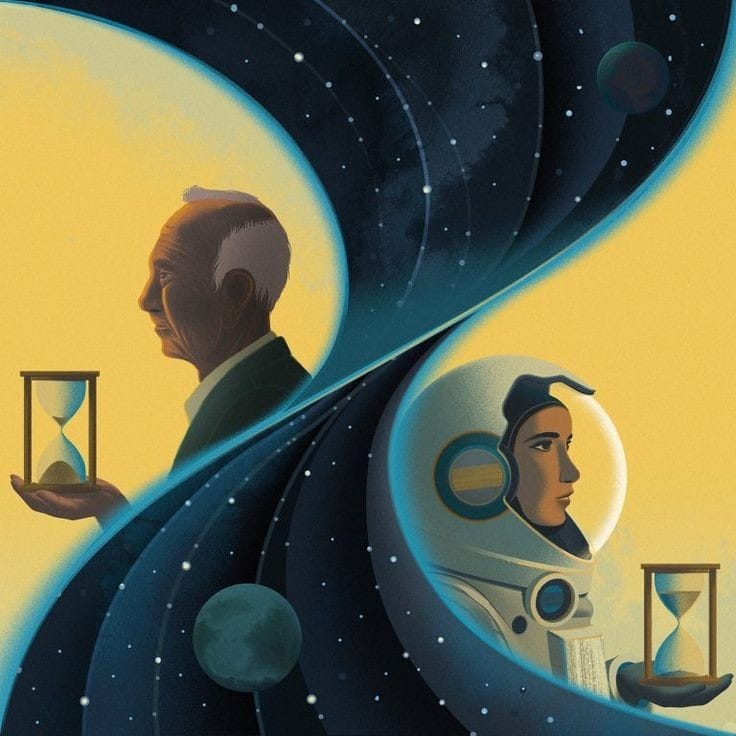Exploring the Twin Paradox and Zeno's Dichotomy Paradox
Written on
Understanding the Twin Paradox
Einstein's theory of relativity, while seemingly straightforward, can be challenging for many to grasp. If you find yourself struggling with special relativity, rest assured that it's not solely your issue.
This article delves into the Twin Paradox, the concept of Infinity, and Zeno's Dichotomy Paradox. Before you continue, it's advisable to familiarize yourself with the basics of special relativity, as it lays the groundwork for the topics discussed here.
According to Einstein, if an object moves at a significant constant speed relative to an observer in an inertial frame, the experience of time for that moving object will differ from that of the observer. In simpler terms, an inertial frame is one where the object is either at rest or moving at a constant speed.
The Twin Paradox unfolds like this: Picture two twin brothers. On their 25th birthday, one embarks on a journey through space, while the other remains on Earth. The traveling twin observes an object several light-years away.
In this scenario, the twin on Earth is stationary, while the other travels at a velocity nearing the speed of light, leading to less time experienced by him. Upon reuniting, the Earth-bound twin perceives himself as older, while his spacefaring brother appears younger.
Conversely, the traveling twin views himself as stationary relative to the spacecraft. To him, it seems that the twin on Earth is the one moving away at high speed. Thus, from his perspective, the Earth twin’s time appears to pass more slowly, while his own time stretches out.
This creates a puzzling scenario: Who experiences more or less time? Both perspectives seem valid, yet only one can be true. This paradox arises when the traveling twin alters direction, necessitating acceleration. At this point, special relativity becomes less applicable.

When moving at a constant speed, the traveler feels no motion; however, acceleration brings awareness of velocity changes. In such cases, general relativity applies. Thus, by the end of the journey, the twin who traveled will indeed be younger than the one who stayed on Earth. A complex notion, presented as clearly as possible.
Zeno's Dichotomy Paradox Explained
Zeno, a notable figure from ancient Greece, introduced numerous paradoxes that puzzled scientists and mathematicians for centuries. One of his most famous paradoxes revolves around the concept of infinity—known as Zeno's Dichotomy Paradox. The term "dichotomy" refers to a division into two parts.
The paradox describes a scenario in which Zeno decides to walk to a park. To reach the park, he first has to cover half the distance. After reaching that midpoint, he must then cover half of the remaining distance. This process of halving continues infinitely.
If the distance is infinitely divisible, one might conclude that the time taken must also be infinite. However, if the park is just one kilometer away and Zeno walks at a speed of 1 km/h, he will reach his destination in one hour.
How can this be? If the journey is broken down into infinite segments, why does it not require an infinite amount of time?
This question arises from Zeno's initial assumption that dividing the distance in half leads to infinite subdivisions of the journey. He mistakenly believed that infinite divisions implied an infinite relationship. However, this isn't the case. Despite the infinite divisions, if the distances are added up, they yield a finite total.
For instance, if the total distance is represented as 1, the subsequent distances would be 1/2, 1/4, 1/8, 1/16, and so on. When these fractions are summed, they converge to a finite value. Thus, the time taken is also finite. If we correct Zeno's premise, we can effectively resolve his paradox.